Atlantic Monthly Contributors's Blog, page 275
December 14, 2015
‘Rudolph the Red-Nosed Reindeer’: Superhero

Welcome to The 12 Days of Christmas Songs: an attempt to uncover the forgotten history of some of the most memorable festive tunes. From December 14 through 25, we’ll be tackling one secular song and one holy song each day.
If you leave aside the tiny detail that Rudolph is a mythical reindeer, his story—triumph in the face of adversity, and in fact triumph by way of adversity—is wonderfully human. It’s the hero’s journey mixed with She’s All That mixed with Harry Potter mixed with, pretty much, any story whose plot revolves around heroes who have been made heroic by way of their very weirdness.
So it’s remarkable that “Rudolph the Red-Nosed Reindeer” began its life as an extremely commercial story. Rudolph—®, and all that—was created in 1939 by Montgomery Ward, which traditionally gave away children’s coloring books during the holiday season. After the store asked one of its in-house copywriters, Robert May, to come up with a “cheery” character to star in a new round of booklets, May came up with Rudolph. (Well, actually, he came up with “Rollo” and “Reginald” before settling on Rudolph.)
The story—Montgomery Ward distributed some 2.4 million copies of the book—spawned several sequels. It also, in 1949, led to a song. Written in 1949 by May’s brother-in-law, Johnny Marks, a radio producer, “Rudolph the Red-Nosed Reindeer” set the spunky reindeer’s story to music—a song first recorded by the singer Harry Brannon, and then, more famously, by Gene Autry later that year. It focused on the thing that makes Rudolph’s story so appealing and enduring: his transformation from misfit to hero.
You know how it goes: Rudolph, possessor of a nose that is both red and “very shiny,” doesn’t fit in with the other reindeer (reindeernormativity, in this case, mostly involving matte, colorless snouts). Those other reindeer bully him for being different, laughing at him and calling him names and—ouch, ouch, ouch—never letting poor Rudolph join in any reindeer games.
The lyrics of “Rudolph the Red-Nosed Reindeer” are, certainly, sparse. In service of the song’s speedy clip, things jump very quickly: One moment, the reindeer bros are bullying Rudolph; the next, they’re celebrating him. Rudolph, on a foggy Christmas Eve, puts his shiny “defect” to good use. And then suddenly, jarringly:
Then how all the reindeer loved him,
As they shouted out with glee,
‘Rudolph the red-nose Reindeer
You’ll go down in history’
Why do they change their attitude so quickly? Because they’ve always felt a little bit bad about how they’ve treated Rudolph, and his sleigh-guiding gives them a chance to redeem themselves? Because, despite their mockery, they’ve always, actually, been a little bit envious of their colleague’s uniquely shiny schnoz? Because of an extremely literal interpretation of shine theory?
We never, through the song’s lyrics, find out for sure. But that is the beauty of the whole thing. Rudolph is a superhero, essentially, and he gets, through the song that tells his story, the comic book-like treatment of a superhero: He is all bold lines and bright colors, justice triumphing against the lack of it, the special winning out over the boringly conventional. We—the people who read about him, and hear about him—are left to fill in the blanks. Rudolph, the little reindeer that could, is an archetype. And so is his very shiny nose.









The Oil-Price Plunge

Over the summer, analysts predicted that oil prices might plunge below $40. Now they’re even lower, nearing an 11-year low with U.S. crude oil dropping briefly below $35 a barrel this morning. Brent crude, the global benchmark, is hovering just below $38 a barrel.
 Two major indicators of oil prices have been plunging. (FRED) Related Story
Two major indicators of oil prices have been plunging. (FRED) Related Story 
The Game of Chicken Behind Low Oil Prices
The low prices are due to oversupply—the so-called “oil-price war” initiated by the Organization of the Petroleum Exporting Countries (OPEC). Since November of last year, OPEC members, in a bid to gain market share over U.S. producers, have produced oil at high levels to push prices down—and, theoretically, their competitors out, since low prices mean a cut in profits.
At an OPEC meeting in early December of this year, the group failed to reach an agreement on a proposed production ceiling, and as a result production has remained at some 31.5 million barrels per day. OPEC’s strategy seems to be working: Low oil prices have already led to rig closures across America, and it’s expected that high-cost oil-production (the sort that is common in the U.S.) will be the first to be edged out of the market altogether.
Prices are expected to continue to fall, as sanctions on Iran’s oil production are expected to be lifted soon, at which time Iran has already pledged to boost crude exports without delay. When that happens, there will be one big question about oil prices: How low can they go?









Obama: 'We Are Hitting ISIL Harder Than Ever'

President Obama said Monday the U.S.-led mission against the Islamic State “continues to be a difficult fight.”
“We are hitting ISIL harder than ever,” the president said, using one of the name for the Islamist militant group, which is also called ISIS and Daesh.
His brief statement to reporters followed a meeting at the Pentagon with his cabinet officials and senior national security advisers, a gathering billed as a “quick update” on the more than 18-month-old campaign against the organization, which rapidly seized control of large parts of Syria and Iraq last summer.
The meeting comes less than two weeks after a husband-and-wife team shot and killed 14 people in San Bernardino, California, allegedly in the name of the Islamic State, shaking a public already on edge after attacks last month in Paris claimed by the group took 130 lives.
Obama reiterated his strategy for defeating the Islamic State, as he has done on a seemingly near-daily basis in recent weeks. He said that, even before the assaults in San Bernardino and Paris, he authorized more action to “intensify our war against ISIL.”
Obama said the U.S. launched more air strikes in November than in any previous month in the campaign. He also confirmed the death of Islamic State member Mohammed Emwazi, the British man dubbed“Jihadi John” who beheaded Western hostages on camera, and whom U.S. officials were “reasonably certain” was killed in a strike last month.
“All of this said, we recognize that progress needs to keep coming faster,” Obama said. “No one knows that more than the countless Syrians and Iraqis living every day under ISIL terror, as well as the families in San Bernardino and Paris and elsewhere who are grieving the loss of their loved ones.”
The Pentagon has dispatched special-forces teams to Iraq and Syria this fall, a first in a mission largely defined by drone warfare since its inception. Last week, U.S.-backed Iraqi forces seized one of the Islamic State’s operations centers on the outskirts of Ramadi, a significant achievement in the battle to recapture neighborhoods in and around the Iraqi city under the militant group’s control. But White House officials say that win took “a frustratingly long time.” Carter said last week his department is prepared to deploy advisers and attack helicopters—if the prime minister of Iraq wants them—to the region to “finish the job.”
Obama was last at the Pentagon in July, also to talk about the growing threat of the Islamic State. Monday’s meeting included a number of big names: Vice President Joe Biden; secretaries John Kerry of State, Ash Carter of Defense, Jeh Johnson of Homeland Security, Jacob Lew of Treasury, and several of their deputies; Attorney General Loretta Lynch; U.N. Ambassador Samantha Power; national security advisers Ben Rhodes and Susan Rice; James Comey, the FBI director; and General Lloyd Austin, head of U.S. Central Command.
The meeting comes as Americans are increasingly fearful of a terrorist attack on U.S. soil. A New York Times/CBS News poll found last week that 44 percent of the public says an attack is “very” likely to happen in the next few months—the most in such polls since October 2001.
This week has a counterterrorism-heavy itinerary for the Obama administration. Carter left for the Middle East after the president spoke on Monday, Kerry will be in Moscow on Tuesday to meet with Russian President Vladimir Putin, Obama will visit the National Counterterrorism Center on Thursday, and Johnson will announce a new terror warning system for the country in the coming days.









Le Pen Will Be Mightier

Over the weekend, Marine Le Pen’s far-right National Front Party did not win control of any of France’s 13 metropolitan regions in the second round of voting in local elections.
But that’s not because the party isn’t growing in popularity or because French voters are rejecting its xenophobic campaign messages. Were it not for some tactical maneuvering on the part of her Socialist opponents, who withdrew candidates from three regions, Le Pen, who aspires to be elected France’s president in 2017, and her niece, Marion Maréchal-Le Pen, would have almost certainly won at least two regional presidencies.
In the first round of voting last week, National Front led in six of the 13 regions. Despite not capturing any regions after the second round, it did garner more than 6 millions votes, a sign of the party’s ascendency into the French mainstream and a distressing signal for the political establishment in France.
“Nothing can stop us,” Le Pen crowed on Sunday. “Thank you for having defied the orders issued from the palaces of the Republic.”
Saw several of these Front National posters on the Périphérique this weekend. "Choose your suburb: vote Front! pic.twitter.com/RAtYRdGN0c
— Sedulia Scott (@Sedulia) November 29, 2015
The National Front was leading in the polls ahead of the elections because of France’s anemic economy and record unemployment. And in the wake of last month’s attacks in Paris, the party, which is heavily nationalist, historically anti-Semitic, and runs an anti-immigrant platform, tripled its presence on regional councils.
There was little joy this weekend, even for former President Nicolas Sarkozy’s opposition center-right party, Les Républicains, which captured seven of the 13 regions. According to The New York Times, “The former Prime Minister François Fillon, another contender for the presidency in 2017, noted that ‘the rise of the F.N. has deprived the opposition of a clear victory.’”
On Sunday, Manuel Valls, the French prime minister and a leader in the country’s ruling Socialist Party, thanked voters for blocking Front National, but hardly sounded happy about the outcome. “[T]here is no relief, no triumphalism, no message of victory. The danger of the extreme right is not averted. I do not forget the results of the first round and of past elections.”
Over at The Daily Beast, Christopher Dickey allowed for a limited comparison between Le Pen and Donald Trump and the climates in their respective countries.
Indeed, traditional politicians here regard Le Pen with something like the same horror that the American mainstream regards Donald Trump, and for some of the same reasons. Seen as sly, anti-immigrant, implicitly racist populists, both are portrayed in the political language of Europe as “fascists.”
Le Pen herself has rejected that comparison: “Seriously, have you ever heard me say something like that?” she asked last week in a television interview. “I defend all the French people in France, regardless of their origin, regardless of their religion.”
Irrespective of what she believes, the National Front, despite Sunday’s loss, has, in Dickey’s words, “become not just a third party in the multi-party French system, it has become the third party.”









Rejecting Pete Rose, Again

On Monday, Major League Baseball Commissioner Rob Manfred weighed in on a saga that has hung over the national pastime for more than a generation: the status of Pete Rose, the Reds great, who was banished from the sport in 1989 for betting on baseball.
In a statement, Manfred said Rose had “not presented credible evidence of a reconfigured life either by an honest acceptance by him of his wrongdoing … or by a rigorous, self-aware, and sustained program of avoidance by him of all the circumstances that led to his permanent ineligibility in 1989.”
The 74-year-old former player and manager had appealed his ban with MLB’s previous commissioner, Bud Selig, in 1992, but Selig refused to make a ruling prior to his retirement earlier this year. In the meantime, public campaigns to convince baseball to reinstate its all-time leader in hits (4,256), singles (3,215), games played (3,562), and games won (1,972), floundered.
Prior to Monday’s decision, Rose hasn’t exactly made it easy on himself. He used to hawk autographed copies of the document banishing him from baseball for $500 a pop. He also denied gambling on baseball until 2004, when Rose finally admitted in a book he bet on games as the manager of the Cincinnati Reds. At the the time, he said he only bet on his team to win. But earlier this year, an ESPN investigation revealed Rose had, in fact, bet on games as a player as well.
Manfred’s decision will most directly affect Rose’s chances of entering the Baseball Hall of Fame. Rose hoped his reinstatement to MLB would be the first step in the process of allowing the Hall of Fame in Cooperstown, New York, to consider his candidacy. Following Rose’s banishment in 1989, the Baseball Hall of Fame, which is governed separately from MLB, passed a rule declaring that no player who had been banned from baseball could stand for enshrinement in Cooperstown.
In his decision, Manfred stressed his respect for Rose’s accomplishments as a player and added the issue of his Hall of Fame prospects remains out of MLB’s hands.









The 2016 U.S. Presidential Race: A Cheat Sheet

The Ted Cruz moment has arrived. The question is how long it will last. Is it fleeting? Or will it run right up to the nomination stage at the RNC in Cleveland?
In the latest Des Moines Register poll, the Texas senator has surged way ahead of Donald Trump in Iowa, with 10 points separating them. Nationally, he still lags well behind Trump, but he’s been steadily climbing and is in second place in RealClearPolitics’ average.
How did this happen? Most of all, Cruz seems to have benefited from the collapse of Ben Carson, who has slipped significantly. He’s also pulling some voters from Donald Trump—just as he predicted would happen eventually, which is why he cozied up to Trump for so long. Cruz recently pulled in the endorsement of influential Iowan Bob Vander Plaats, effectively clinching evangelical support in the state. His campaign is also trumpeting his data efforts, which seek to close the campaign technology gap between Republicans and Democrats.
In short, everything is working out just as Cruz planned it. Now, can his strategy carry him to the nomination? He’s still got a long way to go in New Hampshire and in South Carolina. But another key part of the Cruz strategy is building up support in the March 1 “SEC Primary.” Arrayed against Cruz are the forces of the rest of the Republican Party. Many in his party frankly dislike him, and some find him too conservative and would like to stop him. (Also: Seriously, can anyone explain this joke?) By all indications, the candidate around whom those forces will coalesce is Marco Rubio. But Rubio doesn’t have nearly the ground organization that Cruz does. Will he have the oomph to outdo his Senate colleague?
Also now arrayed against Cruz, apparently, is Donald Trump. The two men have been careful to be friendly to each other for months, though more recently Cruz has been willing to disagree with Trump while remaining complimentary. But after an audio recording leaked of Cruz questioning Trump’s judgment at a fundraiser, Trump has begun assailing Cruz’s judgment. The state of the Cruz-Trump relationship, and whether it develops into an outright feud, will be one of the most compelling story lines in the December 15 Republican debate in Las Vegas.
Speaking of that debate, it’s been a while, hasn’t it? We’ve missed the fun. One returning presence on stage in Vegas will be Chris Christie, who failed to make the cut for the previous debate but has surged back, helped by a big endorsement in New Hampshire. Meanwhile, Rand Paul will also be up there, making it by the skin of his teeth, defying expectations that he wouldn’t. Still, Paul’s campaign is on life support, and he was rumored to be on the verge of dropping out if he didn’t make the main debate. How long will he last now that he’s in?
Also struggling is Ben Carson. The retired neurosurgeon is now fourth in RCP’s average—behind Trump, Cruz, and Rubio, but well ahead of Jeb Bush—but it’s the result of a precipitous fall: His percentage of the vote has fallen by nearly half since the beginning of November, a tumble commonly attributed to his fumbling answers on national security. (We are skeptical of that explanation.) Showing that that politics has little fury like an outsider candidate spurned, Carson has begun talking about a third-party bid—as has Trump. (Imagine a general election matchup between Hillary Clinton, Ted Cruz or Marco Rubio, Donald Trump, and Ben Carson!)
The rest of the Republican field remains a bunch of question marks. Does Jeb Bush have a comeback plan, and can it possibly work? Will we ever hear from Carly Fiorina again? Has the Christie comeback ended John Kasich’s hopes of New Hampshire victory launching him to glory? Why are Mike Huckabee, Lindsey Graham, Rick Santorum, and George Pataki still in this race? Who is Jim Gilmore again?
The Democratic field remains far calmer. Things seem to have settled into equilibrium: Hillary Clinton is comfortably in the lead, Bernie Sanders isn’t going anywhere, and Martin O’Malley is reportedly still around. The Democrats also meet for a debate this week, on Saturday, December 19.
With so many candidates—14 Republicans alone—in the mix, it’s tough to keep track of it all. To help out with that, this cheat sheet on the state of the presidential field will be periodically updated throughout the campaign season. Here’s how things look right now.
* * *
The Republicans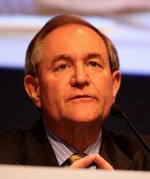 Gage Skidmore
Jim Gilmore
[image error]
Gage Skidmore
Jim Gilmore
[image error] Who is he? Right? Gilmore was governor of Virginia from 1998 to 2002. Before that, he chaired the Republican National Committee for a year. In 2008, he ran for Senate in Virginia and lost to Mark Warner by 31 points.
Is he running? Yes. He filed his papers on July 29.
Who wants him to run? Who knows?
Can he win? Nah.
Does his website have a good 404 page? Holy Freudian slip, Batman!
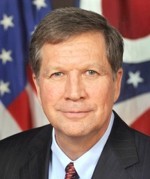 Wikimedia
John Kasich
[image error]
Wikimedia
John Kasich
[image error] Who is he? The current Ohio governor ran once before, in 2000, after a stint as Republican budget guru in the House. Between then and his election in 2010, he worked at Lehman Brothers. Molly Ball wrote a definitive profile in April.
Is he running? Yes. His announcement was July 21 at Ohio State University in Columbus.
Who wants him to run? Kasich’s pitch: He’s got better fiscal-conservative bona fides than any other candidate in the race, he’s proven he can win blue-collar voters, and he’s won twice in a crucial swing state.
Can he win the nomination? Kasich seems to have firmly established himself as a lower-middle-tier candidate: On the main debate stages, but nowhere near the nomination. His strategy has long been to win New Hampshire, where he is ahead of Jeb Bush (but behind four others), but the surge of Chris Christie—another moderate-ish, technocratic governor—in the Granite State is bad news for Kasich’s nomination hopes.
What else do we know? John Kasich bought a Roots CD and hated it so much he threw it out of his car window. John Kasich hated the Coen brothers’ classic Fargo so much he tried to get his local Blockbuster to quit renting it. George Will laughed at him. John Kasich is the Bill Brasky of philistinism. John Kasich probably hated that skit, too.
Does his website have a good 404 page? Nope.
 David Shankbone
Chris Christie
[image error]
David Shankbone
Chris Christie
[image error] Who is he? What’s it to you, buddy? The combative New Jerseyan is in his second term as governor and previously served as a U.S. attorney.
Is he running? Christie kicked off his campaign June 30 at Livingston High School, his alma mater.
Who wants him to run? Moderate and establishment Republicans who don’t like Bush or Kasich; big businessmen, led by Home Depot founder Ken Langone.
Can he win the nomination? Doubtful. The tide of opinion had turned against Christie even before the "Bridgegate" indictments. Citing his horrific favorability numbers, FiveThirtyEight bluntly puns that “Christie's access lanes to the GOP nomination are closed.” But since snagging the endorsement of the New Hampshire Union Leader, he’s seen a nice boomlet.
Does his website have a good 404 page? We would have gone with the GIF, but sure.
 Gage Skidmore
Donald Trump
[image error]
Gage Skidmore
Donald Trump
[image error] Who is he? The real-estate developer and reality-TV star fired TV personality almost certainly isn’t worth as much as he wants you to think he is.
Is he running? And how.
Who wants him to run? A shocking portion of the Republican primary electorate; Democrats; white supremacists. The rest of the Republican field, along with its intellectual luminaries, however, seem horrified.
Can he win the nomination? We’ve heard over and over again that he has no chance. But after months, he’s still leading the field, so ...
[image error] What else do we know? He cheats at golf, probably.[image error] Gage Skidmore
Jeb Bush
[image error]
Gage Skidmore
Jeb Bush
[image error] Who is he? The brother and son of presidents, he served two terms as governor of Florida, from 1999 to 2007.
Is he running? Yes, as of June 15.
Who wants him to run? Establishment Republicans; George W. Bush; major Wall Street donors.
Can he win the nomination? Boy, can he? Bush still has a lot of money behind him—mostly in his super PAC, Right to Rise—and his campaigning seems to have improved slightly on its low-energy nadir, but at some point he has to start looking like a real candidate. That hasn’t happened yet.
Does his website have a good 404 page? Yes—y en español también.
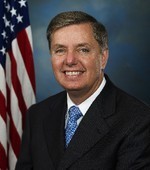 Wikimedia
Lindsey Graham
Wikimedia
Lindsey Graham
Who is he? A senator from South Carolina, he’s John McCain’s closest ally in the small caucus of Republicans who are moderate on many issues but very hawkish on foreign policy.
Is he running? He sure is. Graham kicked off the campaign June 1.
Who wants him to run? John McCain, naturally. Senator Kelly Ayotte, possibly. Joe Lieberman, maybe?
Can he win the nomination? No. But he’s going to have some fun in losing it.
What else do we know? Graham promises to have a rotating first lady if he wins. We nominate Lana del Ray.
 Michael Vadon
George Pataki
[image error]
Michael Vadon
George Pataki
[image error] Who is he? Pataki ousted incumbent Mario Cuomo in 1994 and served three terms as governor of New York.
Is he running? Yes. He announced May 28.
Who wants him to run? It's not clear. Establishment Northeastern Republicans once held significant sway over the party, but those days have long since passed.
Can he win the nomination? Nope.
Does his website have a good 404 page? No.
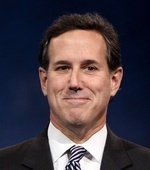 Gage Skidmore
Rick Santorum
[image error]
Gage Skidmore
Rick Santorum
[image error] Who is he? Santorum represented Pennsylvania in the Senate from 1995 until his defeat in 2006. He was the runner-up for the GOP nomination in 2012.
Is he running? Yes, with a formal announcement on May 27.
Who wants him to run? Social conservatives. The former Pennsylvania senator didn't have an obvious constituency in 2012, yet he still went a long way, and Foster Friess, who bankrolled much of Santorum's campaign then, is ready for another round.
Can he win the nomination? Nah. As much as Santorum feels he deserves more respect for his 2012 showing, neither voters nor the press seem inclined to give it to him, and he remains trapped in the basement.
Does his website have a good 404 page? No.
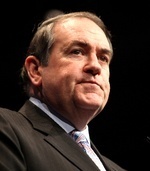 Gage Skidmore
Mike Huckabee
[image error]
Gage Skidmore
Mike Huckabee
[image error] Who is he? An ordained preacher, former governor of Arkansas, and Fox News host, he ran a strong campaign in 2008, finishing third, but sat out 2012.
Is he running? Yes. He kicked off the campaign May 5.
Who wants him to run? Social conservatives; evangelical Christians.
Can he win the nomination? No. Evangelicals have flocked to Ben Carson and Ted Cruz instead. Huckabee’s answer has been to play as a populist, but that has its own pitfalls: He faces fire from strict conservative groups for tax hikes while he was governor.
Does his website have a good 404 page? It’s pretty good.
 Gage Skidmore
Ben Carson
[image error]
Gage Skidmore
Ben Carson
[image error] Who is he? A celebrated former head of pediatric neurosurgery at Johns Hopkins, Carson became a conservative folk hero after a broadside against Obamacare at the 2013 National Prayer Breakfast.
Is he running? Yes. He announced May 4.
Who wants him to run? Grassroots conservatives, who have boosted him up near the top of polls, even as Republican insiders cringe. Carson has an incredibly appealing personal story—a voyage from poverty to pathbreaking neurosurgery—and none of the taint of politics.
Can he win the nomination? History weighs heavily against Carson: Not since Dwight Eisenhower has either party nominated anyone without prior elected experience for the presidency. Nonetheless, Carson has quietly shown impressive staying power and is running second or third in national polls. One challenge is that his politics are eclectic unto near incoherence, and he has a tendency to do things like compare ISIS to the Founding Fathers.
Does his website have a good 404 page? No.
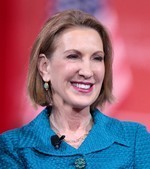 Gage Skidmore
Carly Fiorina
[image error]
Gage Skidmore
Carly Fiorina
[image error] Who is she? Fiorina rose through the ranks to become CEO of Hewlett-Packard from 1999 to 2005, before being ousted in an acrimonious struggle. She advised John McCain’s 2008 presidential campaign and unsuccessfully challenged Senator Barbara Boxer of California in 2010.
Is she running? Yes, as of a May 4 announcement.
Who wants her to run? It isn’t clear exactly what Fiorina’s constituency is, but she’s a business-friendly candidate with a talent for a sharp turn of phrase or jab.
Can she win the nomination? Fiorina went from also-ran to huge story on the strength of her first two debate performances. Since then, however, her momentum seems to have faded. Her first round as a candidate, against Barbara Boxer for Senate in 2010, didn’t turn out so well, so the question is how well she learned the lessons of the licking and can turn them into a more successful campaign.
What else do we know? Fiorina’s 2010 Senate race produced two of the most entertaining and wacky political ads ever, "Demon Sheep" and the nearly eight-minute epic commonly known as "The Boxer Blimp."
Does her website have a good 404 page? No.
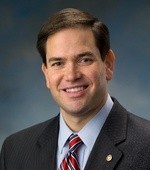 Wikimedia
Marco Rubio
[image error]
Wikimedia
Marco Rubio
[image error] Who is he? A second-generation Cuban-American and former speaker of the Florida House, Rubio was catapulted to national fame in the 2010 Senate election, after he unexpectedly upset Governor Charlie Crist to win the GOP nomination.
Is he running? Yes—he announced on April 13.
Who wants him to run? Rubio enjoys establishment support, and has sought to position himself as the candidate of an interventionist foreign policy.
Could he win the nomination? Rubio finally seemed ready to deliver on his potential starting in November or so, when breakout debate performances pushed him into the spotlight. As Jeb Bush falters, Rubio has cleaned up with major GOP donors. Many analysts have dubbed him the favorite for the nod, but he still has to figure out a way to get back Donald Trump and—in what looks tougher every day—Ted Cruz.
Does his website have a good 404 page? It’s decent.
 Wikimedia
Rand Paul
[image error]
Wikimedia
Rand Paul
[image error] Who is he? An ophthalmologist and son of libertarian icon Ron Paul, he rode the 2010 Republican wave to the Senate, representing Kentucky.
Is he running? Yes, as of April 7.
Who wants him to run? Ron Paul fans; Tea Partiers; libertarians; civil libertarians; non-interventionist Republicans.
Can he win the nomination? Once tabbed by Time as the most interesting man in politics, he has failed to elicit much interest from voters. He almost missed the cut for the December 15 debate, and it was reported that he might have dropped out if he had been excluded. That means it’s only a matter of time, right?
Does his website have a good 404 page? No.
 Wikimedia
Ted Cruz
[image error]
Wikimedia
Ted Cruz
[image error] Who is he? Cruz served as deputy assistant attorney general in the George W. Bush administration and was appointed Texas solicitor general in 2003. In 2012, he ran an insurgent campaign to beat a heavily favored establishment Republican for Senate.
Is he running? Yes. He launched his campaign March 23 at Liberty University in Virginia.
Who wants him to run? Hardcore conservatives; Tea Partiers who worry that Rand Paul is too dovish on foreign policy; social conservatives.
Can he win the nomination? Once dismissed as too conservative and too hated by even fellow Republicans, Cruz’s stock has risen over the course of the fall—though his weaknesses still remain. The case for a Cruz nomination hinges on Donald Trump and Ben Carson collapsing and their support shifting to him; it’s already happening with Carson. He’s also extremely well-funded, and he’s well acquainted with running and willing as an underdog (as his performance in the race for Senate showed). His campaign imagines the race coming down to him and Marco Rubio.
Does his website have a good 404 page? No.
* * *
The Democrats Wikimedia
Hillary Clinton
Wikimedia
Hillary Clinton
Who is she? As if we have to tell you, but: She’s a trained attorney; former secretary of State in the Obama administration; former senator from New York; and former first lady.
Is she running? Yes.
Who wants her to run? Most of the Democratic Party.
Can she win the nomination? A better question is whether she can lose it.
What else do we know? The real puzzler, after so many years with Clinton on the national scene, is what we don't know. Here are 10 central questions to ask about the Hillary Clinton campaign.
Does her website have a good 404 page? If you’re tolerant of bad puns and ’90s ’80s outfits, the answer is yes.
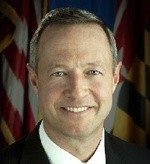 Wikimedia
Martin O'Malley
Wikimedia
Martin O'Malley
Who is he? He’s a former governor of Maryland and mayor of Baltimore.
Is he running? Yes. He announced his campaign on May 30.
Who wants him to run? Not clear. He has some of the leftism of Bernie Sanders or Elizabeth Warren, but without the same grassroots excitement.
Can he win the nomination? Probably not. Why O’Malley—who says all the right progressive things—can’t gain any momentum among progressives who seem eager for Sanders, for Warren, really for anyone but Clinton, is a fascinating conundrum. Recently, he has feuded with Democratic National Committee Chair Debbie Wasserman Schultz, accusing the party apparatus of being in the tank for Clinton.
What else do we know? Have you heard that he plays in a Celtic rock band? You have? Oh.
Does his website have a good 404 page? No.
 Wikimedia
Bernie Sanders
Wikimedia
Bernie Sanders
Who is he? A self-professed socialist, Sanders represented Vermont in the U.S. House from 1991 to 2007, when he won a seat in the Senate.
Is he running? Yes. He announced April 30.
Who wants him to run? Far-left Democrats; Brooklyn-accent aficionados; progressives who worry that a second Clinton administration would be far too friendly to the wealthy.
Can he win the nomination? When Sanders launched his campaign, this question seemed more or less beside the point. That’s no longer true: Sanders is running neck and neck or even ahead of Clinton in key early primary states and regularly drawing larger crowds than her. It remains extremely difficult to see him winning the nomination—as Dems from Howard Dean to George McGovern can remind you, primary voters tend to gravitate to “electable” general-election candidates alone.
Does his website have a good 404 page? Yes, and it is quintessentially Sanders.
* * *
Out of the Running Democrats Wikimedia
Lawrence Lessig
Wikimedia
Lawrence Lessig
Who is he? Lessig is a professor at Harvard Law School, political activist, and occasional Atlantic contributor.
Is he running? No. Having announced a run in early September, he dropped out on November 2.
Who wanted him to run? Lessig’s campaign was designed to cater almost exclusively to the many Americans who are upset about the influence of money in politics. He pitched himself as a “referendum president” who would pass his proposed Citizens Equality Act of 2017, which would enact universal voting registration, campaign-finance limits, and anti-gerrymandering provisions.
Could he have won the nomination? No. In dropping out, he cited his inability to break into the Democratic debates, but given his lack of electoral experience, his idiosyncratic platform, and the track record of his Mayday PAC in the 2014 election, he never really had a shot.
What else do we know? In a season 6 episode of The West Wing, a fictional Lessig (played by Christopher Lloyd) worked with the White House to write a new constitution for Belarus.
Does his website have a good 404 page? “Sorry, we’re too busy fixing democracy to design a clever 404 page!” You have time now!
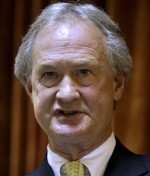 Steven Senne / AP
Lincoln Chafee
Steven Senne / AP
Lincoln Chafee
Who is he? The son of beloved Rhode Island politician John Chafee, Linc took his late father’s seat in the U.S. Senate, serving as a Republican. He was governor, first as an independent and then as a Democrat.
Is he running? No. Chafee announced his run on June 3, but ended it October 23.
Who wanted him to run? You can meet all 10 of them in this great NPR piece.
Could he have won the nomination? No. Chafee’s showing in the first debate was so bad that even Wolf Blitzer begged him to get out for his own reputation’s sake.
Does his website have a good 404 page? No.
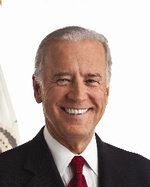 Wikimedia
Joe Biden
Wikimedia
Joe Biden
Who is he? Biden is vice president, and the foremost American advocate for aviator sunglasses and passenger rail.
Is he running? No. After lengthy deliberation, Biden ruled out a run on October 21.
Who wanted him to run? The original driving force for the run seems to have been the late Beau Biden, along with his brother Hunter. An outside group called Draft Biden (slogan: “I’m Ridin’ With Biden”) tried to coax him in.
Could he have won the nomination? It’s highly doubtful. Even when Hillary Clinton was at her weakest, she had huge organizational advantages. And past presidential campaign showed that Biden, while compelling, could be an undisciplined, self-defeating candidate.
 Wikimedia
Jim Webb
Wikimedia
Jim Webb
Who is he? Webb is a Vietnam War hero, author, and former secretary of the Navy. He served as a senator from Virginia from 2007 to 2013.
Is he running? Not at the moment. Webb launched his bid July 2 but dropped it October 20. He might yet mount an independent campaign.
Who wants him to run? Dovish Democrats; socially conservative, economically populist Democrats; the Anybody-But-Hillary camp.
Could he have won the nomination? No. He’s simply more conservative than most Democrats, out of step with the party on racial issues, and ill at ease on the stump.
What else do we know? Read Webb’s longtime friend James Fallows on why he wanted Webb in the race.
Does his website have a good 404 page? No.
 Wikimedia
Elizabeth Warren
Wikimedia
Elizabeth Warren
Who is she? Warren has taken an improbable path from Oklahoma, to Harvard Law School, to progressive heartthrob, to Massachusetts senator.
Is she running? Haha, still no!
Who wants her to run? Progressive Democrats; economic populists, disaffected Obamans, disaffected Bushites.
Can she win the nomination? No, because she’s not running.
* * *
Republicans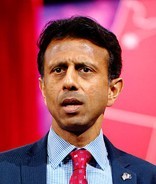 Gage Skidmore [image error]
Bobby Jindal
[image error]
Gage Skidmore [image error]
Bobby Jindal
[image error] Who is he? A Rhodes Scholar, he’s the outgoing governor of Louisiana. He previously served in the U.S. House.
Is he running? No. He kicked off his campaign on June 24 but suspended it on November 17.
Who wanted him to run? It’s was hard to say. Jindal assiduously courted conservative Christians, both with a powerful conversion story (he was raised Hindu but converted to Catholicism in high school) and policies (after other governors reversed course, he charged forward with a religious-freedom law). But he still trailed other social conservatives like Ted Cruz and Mike Huckabee.
Could he have won the nomination? No. Jindal never gained traction at the national level, faced an overcrowded field of social conservatives, and his stewardship of Louisiana came in for harsh criticism even from staunch fiscal conservatives.
What else do we know? In 1994, he wrote an article called “Physical Dimensions of Spiritual Warfare,” in which he described a friend’s apparent exorcism.
Does his website have a good 404 page? Meh. Good joke, but past its expiration date.
 Gage Skidmore
Rick Perry
[image error]
Gage Skidmore
Rick Perry
[image error] Who is he? George W. Bush’s successor as governor of Texas, he entered the 2012 race with high expectations, but sputtered out quickly. He left office in 2014 as the Lone Star State’s longest-serving governor.
Is he running? Yes. He announced on June 4. Perry dropped out of the race on September 11.
Who wanted him to run? Bueller?
Could he have won the nomination? No. Perry promoters insisted that Rick 2016 was a polished, smart campaigner, totally different from the meandering, spacey Perry of 2012. It didn’t seemed to matter in this field. Perry had to quit paying his staff in South Carolina and New Hampshire, and was down to a single staffer in Iowa when he dropped out.
Does his website have a good 404 page? That depends. Is this an “oops” joke? If so, yes.
 Gage Skidmore
Sarah Palin
[image error]
Gage Skidmore
Sarah Palin
[image error] Who is she? If you have to ask now, you must not have been around in 2008. That’s when John McCain selected the then-unknown Alaska governor as his running mate. After the ticket lost, she resigned her term early and became a television personality.
Is she running? No, despite a bizarre speech in January that made a compelling case both ways.
Who wants her to run? Palin still has diehard grassroots fans, but there are fewer than ever.
Can she win the nomination? No.
When will she announce? It doesn't matter.
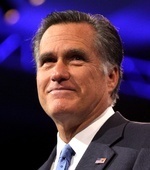 Gage Skidmore
Mitt Romney
[image error]
Gage Skidmore
Mitt Romney
[image error] Who is he? The Republican nominee in 2012 was also governor of Massachusetts and a successful businessman.
Is he running? Probably not, but who knows! He announced in late January that he would step aside, but now New York claims that the Trump boom has him reconsidering.
Who wanted him to run? Former staffers; prominent Mormons; Hillary Clinton's team. Romney polled well, but it's hard to tell what his base would have been. Republican voters weren't exactly ecstatic about him in 2012, and that was before he ran a listless, unsuccessful campaign. Party leaders and past donors were skeptical at best of a third try.
Could he have won the nomination? He proved the answer was yes, but it didn't seem likely to happen again.
 Gage Skidmore
John Bolton
Gage Skidmore
John Bolton
Who is he? A strident critic of the UN and leading hawk, he was George W. Bush’s ambassador to the UN for 17 months.
Is he running? Nope. After announcing his announcement, in the style of the big-time candidates, he posted on Facebook that he wasn’t running.
Who wanted him to run? Even among super-hawks, he didn’t seem to be a popular pick, likely because he had no political experience.
Could he have won the nomination? They say anything is possible in politics, but this would test the rule. A likelier outcome could be a plum foreign-policy role in a hawkish GOP presidency.
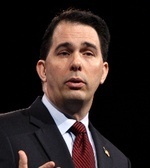 Gage Skidmore
Scott Walker
[image error]
Gage Skidmore
Scott Walker
[image error] Who is he? Elected governor of Wisconsin in 2010, Walker earned conservative love and liberal hate for his anti-union policies. In 2013, he defeated a recall effort, and he won reelection the following year.
Is he running? No. Walker dropped out of the race on September 21.
Who wanted him to run? Walker was a favorite of conservatives who detest the labor movement because of his union-busting in Wisconsin. He attracted interest from the Koch brothers, and some establishment Republicans saw him as the perfect marriage of executive know-how, business-friendly credentials, and social conservatism without culture-warrior baggage.
Could he have won the nomination? For months, Walker was considered—along with Jeb Bush and Marco Rubio—a top-tier contender for the nomination. Hurricane Trump hurt all three, but none more than Walker. After largely fading from view during the second presidential debate, he polled below 1 percent in a national CNN poll. Perhaps a radically different campaign would have produced a different result, but Walker didn’t seem ready for national primetime.
Did his website have a good 404 page? Aye, matey.









The High Spiritual Stakes of ‘God Rest Ye Merry Gentlemen’

Welcome to The 12 Days of Christmas Songs: an attempt to uncover the forgotten history of some of the most memorable festive tunes. From December 14 through 25, we’ll be tackling one secular song and one holy song each day.
Amid cups of cocoa and romantic snowfalls and sparkly pine trees, it’s easy to forget that Christmas, like Christianity itself, is a little dark. The merriment is really existential relief: Humanity will, after all, be saved—from evil, and from ourselves.
In its best renditions, “God Rest Ye Merry Gentlemen” captures this haunting side of the holiday. The song brings tidings of comfort and joy wrapped in a minor melody, a reminder that Jesus has come “to save us all from Satan’s power when we were gone astray.” It’s a carol about the high spiritual stakes of Christmas—after all, if not for the birth of Jesus, Christians believe, humanity would be lost.
At least in America, though, radio listeners want a little more of that peppermint bubblegum in December. Many of the classic and most popular versions of “God Rest Ye” are musically and nostalgically pleasing, but they minimize the song’s ominous texture. Nat King Cole. Ella Fitzgerald. Even the Barenaked Ladies, who turned the song into an undeniable toe-tapper in 2004.
Then there are the terrible takes. In 1999, the boy band 98 Degrees turned the song into a nightmare date-night track, conjuring images of Nick Lachey trying to ease off someone’s shirt while cooing softly about the baby Jesus. The Glee cast has fans aplenty, but the elf-like sweetness of their 2010 recording carries strong, unfriendly notes of early-aughts middle-school dances. As for Manheim Steamroller … that phenomenon remains more mysterious than the Immaculate Conception.
A few artists have managed to give “God Rest Ye” a greater sense of weighty portent. The song is British, first published in the mid-19th century but possibly dates to the 16th century or earlier. Annie Lennox, the Scottish musician and performer extraordinaire, took this history to heart, interpreting the carol as a sort of Old English version of Labyrinth:
And virtually no performers can match Alison Krauss and Joshua Bell in their mastery of their instruments: Her voice weaves carefully with his violin in their 2013 rendition of the song. As with the Lennox version, there’s a feeling of musical rightness here. The simplicity of the composition, the long-held notes, and the gentle plucking of guitar in the background seem faithful to how it might have been performed in earlier times, over ale in snowy English taverns.
Of course, artists make new music out of old melodies all the time. “God Rest Ye Merry Gentlemen” doesn’t need to be performed on the lute to feel authentic; as Annie Lennox showed, it can come packaged in a super-weird, partly animated music video and still feel cool. But nodding to the history helps. It’s a musical reminder of a time when Satan may have seemed closer by, when the threat of evil may have felt more imminent. It can be hard to sing about these things today, particularly in mainstream music. So when these old songs find their way into the right contemporary musicians’ hands, the moment feels rare, and precious: a portal into an old world, a reminder of a Christmas that’s not all sweet.









Twenty-Four Out of 25 Ain’t Bad

As the reigning NBA champions marauded their way through November, shattering the record for most consecutive wins to start a season, basketball observers started wondering if the Golden State Warriors had a shot at the all-time best season, 72 wins and just 10 losses, which Michael Jordan and the Chicago Bulls achieved during the 1995-1996 season.
After the Warriors’ run surpassed 20 games, some started to wonder when (and even if) the Golden State Warriors would lose a game this season. Looking down their list of opponents, the 








December 13, 2015
Your Christmas Nativity Scene Is a Lie

What happens when you cross the newborn baby Jesus with The Walking Dead? Upset neighbors and a whole of of controversy—especially if you’re the couple in Ohio who built a zombie nativity in their front yard. Theirs isn’t even the strangest nativity out there: There are Etsy artisans offering nativities featuring everything from cats to Star Wars characters. There’s a rubber-duck nativity for those want yuletide during their bath time, and even an Irish nativity with three wise men bearing gifts of clover, Guinness, and a pot of gold. The 2003 Christmas film Love Actually famously featured a grade-school nativity play with multiple lobsters, Spider-Man, and a large green octopus—as if pointing out the myriad strange ways the nativity can been reimagined.
And yet these nativity scenes aren’t much more far-fetched than the traditional ones. Christmas, like many other holidays, is a social ritual informed by some mix of religion and folklore. As you’d expect, many popular depictions of Jesus’s birth are filled with inaccuracies that conflict with the story told in the Bible—the supposed presence of “three kings,” Jesus’s birth in a stable, a fair-skinned holy family. Some are relatively harmless—the understandable result of centuries of obfuscation, speculation, and artistic reinvention. But it’s also time to let others go, or to at least broadly acknowledge their divergence from history.
On the less troublesome side is the nativity setting itself, which is usually a cave or a little stable constructed of twigs and peat moss. A Bible passage describes how Mary and Joseph arrived in Bethlehem to take part in the mandated census, but there “was no room for them in the inn.” But don’t let the English translation fool you: The word “inn” doesn’t refer to some kind of first-century hotel, but rather something like a guest room for visitors. The Bible does say that Jesus was laid in a manger, and in reality, in poorer places like Bethlehem, animals were brought into the lower level of homes at night to keep them safe from bandits.
So the most likely scenario is that Jesus was born in the home of relatives somewhere on the moss-less lower level of the house where animals were often kept. Admittedly, it makes for a less compelling scene than the one most nativities capture. There’s an appealing and fitting degree of vulnerability to these popular images: the holy family, huddled around a newborn, exposed to the elements, and illuminated only by the light of a bright star. The idyllic visuals may explain why this erroneous detail stuck, and was further cemented in the cultural consciousness by the lyrics of countless Christmas carols.
Speaking of which—people often sing that the “cattle were lowing” when Jesus was born. The lyric comes from “Away in a Manger,” a popular carol first published in the late-19th century that propagates many cultural Christmas myths, including the idea that animals surrounded Jesus at his birth. But this is a detail added by a songwriter, not a scripture writer. Many nativities assume that sheep came with the shepherds and the wise men rode on camels, though this is conjecture. Even Pope Benedict XVI admitted, “In the gospels there is no mention of animals,” in his book, Jesus of Nazareth: The Infancy Narratives. If animals were present, there’s no way of knowing which kinds.
The most common animal in most nativities is a donkey, which is based on the popular image of the virgin Mary riding the back of the beast and being led solely by her husband Joseph. Yet the Bible doesn’t say which mode of transportation they used. Scholars think Mary may have ridden a donkey due to her and Joseph’s meager economic means, but it’s also likely that they traveled in a caravan, which was common and much safer than traveling alone. Jesus being born into nature alongside God’s other creatures promotes a vision of harmony among all living things—but it’s possible there were no animals present at all.
The human characters in nativity sets pose even more problems than the animals. Many nativities feature a trinity of monarchs dressed in silk robes, elaborate turbans, and gaudy gold jewelry. But the Bible says only that “magi from the east” followed a strange star to visit the infant child. The word “magi” or “wisemen” originally referred to a class of priests, probably from Persia. They were often students of astrology, which accounts for why they noticed a galactic anomaly to begin with. If Jesus’s visitors had been royalty, the Gospel writers would likely have included such a detail. Instead, Renaissance artworks depicting king-like figures at Jesus’ birth likely contributed to this misrepresentation.
It’s also unclear how many magi there were. The Bible says these wisemen brought three gifts—gold, frankincense, and myrrh—which may have led to the idea that there were three. (Certainly, the beautiful Christmas hymn “We Three Kings” has helped circulate the idea.) Christian tradition has even given these “three kings” names: Melchior, Gaspar, and Balthasar, but all of this is conjecture. The endurance of the image throughout history may stem, again, from its poignancy. The sight of earthly kings bowing to the infant “king of the universe” is a memorable, if an ahistorical, one.
But perhaps the most detrimental detail perpetuated by most of these scenes is the complexion of the human characters in most Western nativities. The holy family is usually depicted with porcelain white skin and other Anglo-Saxon features like piercing blue eyes or rosy cheeks. It’s certainly the case for nativity sets sold at Sears.com, while Pottery Barn Kids’s nativity depicts a white Mary with a gorgeously crimped blonde hairdo. And Sam’s Club apparently sees whiteness as a selling point—their “14-piece Caucasian Nativity Scene” can be yours for $79.71. Not exactly what Irving Berlin meant by “dreaming of a white Christmas.”
Though Renaissance depictions of Jesus often cast him in a European light, white images of Jesus weren’t popularized in the United States until the mid-19th century, according to Edward Blum and Paul Harvey in The Color of Christ. “The transformation of Jesus from light to white in the young United States made him, on one hand, a cultural icon of white power,” Blum and Harvey note. While the previous problems with popular nativities are largely innocuous flourishes amassed over centuries, this one is more serious. It inadvertently reinforces the damaging cultural framework where lightness is correlated with purity and righteousness, and darkness is linked to sin and evil.
The Bible is actually silent on the matter of Jesus’s complexion (and the rest of the holy family’s), and the absence of these details is advantageous for the Christian faith. Some scholars have posited that “the silence of the Scriptures on the issue of Jesus’ skin color is critical to Christianity’s broad appeal with people of various ethnicities.” Still, historians do agree that Jesus was of Middle Eastern descent, which means he almost certainly had dark skin, dark hair, and dark eyes.
All cultural traditions shift over time—especially those whose origins date back millennia. So it’s understandable that the standard nativity scene today has some dubious connections with the moment it aims to capture. Yes, the gist of the scene is all there. But in replicating these moments mindlessly year after year, there’s a risk in accepting subtle inaccuracies and convenient assumptions as historical fact. When it comes to donkeys or stables, the stakes seem fairly low. But in roundly dismissing these lesser flaws, it’s easier for believers and nonbelievers alike to also ignore the flawed rewriting of Jesus’s background. Which is to say rituals both big and small, religious or otherwise, deserve scrutiny—and that applies to more than just cats, lobsters, or zombies.









December 12, 2015
A New Flag for New Zealand?

Flags are curious things. In one sense, they are nothing more than scraps of rectangular cloth emblazoned with colorful designs. But flags are also the foremost symbol by which the merry band of nations that inhabits this planet distinguish themselves from one another. As symbolic representatives of entire peoples, they can evoke within a reasonable observer almost any range of emotions, from mystical reverence to intense revulsion.
Part of that power comes from their permanence: Flags, once chosen, rarely change. But New Zealanders took their first step to revise their national banner on Friday, when the country finished the first vote in its two-stage referendum.
A government panel selected five designs in September from over 10,000 entries to find a possible replacement for their current flag. Voters mailed in ballots between November 20 and December 11 to choose a finalist among them. The winning result: a black-and-blue design that prominently features the silver fern, a national symbol.
Flag referendum: Black and blue silver fern design wins the first public vote https://t.co/YKVAEPHdVi pic.twitter.com/j2F3VPDZCj
— Stuff.co.nz News (@NZStuff) December 11, 2015
Kyle Lockwood, an architectural technologist from New Zealand who now lives in Australia, submitted both the winning design and its runner-up. His second version, which uses a red-and-blue motif, took the first lead during the vote count. But as other designs were eliminated and their votes went to second- and third-place preferences, the black-and-blue design leapt ahead to a razor-thin victory with 50.53 percent of the vote. A final result will be announced on Tuesday.
Lockwood told the New Zealand Herald that he hoped his winning design would be an inclusive one.
I was thinking about a design that would include all New Zealanders. And I feel like the fern with its multiple points represents multiple cultures coming together and growing upward into the future.
It's been an emblem of ours since 1888. It's part of our heritage. And this fern was also used by Maori as a marker at night, to light up pathways.
Some New Zealanders have criticized the country’s current flag as anachronistic for its prominent placement of Britain’s Union Jack. The design also bears a confusing resemblance with its Australian counterpart. New Zealand Prime Minister John Kay, who pushed for the referendum, complained about being mistakenly asked to stand in front of the Australian flag at multiple international events.
Others have criticized the referendum itself, which cost roughly $27 million New Zealand dollars, equivalent to about $18 million U.S. dollars. About 65 percent of respondents in a November poll indicated they wanted to keep the current flag, according to the Sydney Morning Herald.
So this is the choice. Incumbent vs challenger. Whether you like it or not, the people have spoken #NZflag pic.twitter.com/5rOAWQHou9
— Kamahl Santamaria (@KamahlAJE) December 11, 2015
The silver fern will face off against the status quo in the second round of voting between March 3 and March 24.









Atlantic Monthly Contributors's Blog
- Atlantic Monthly Contributors's profile
- 1 follower



